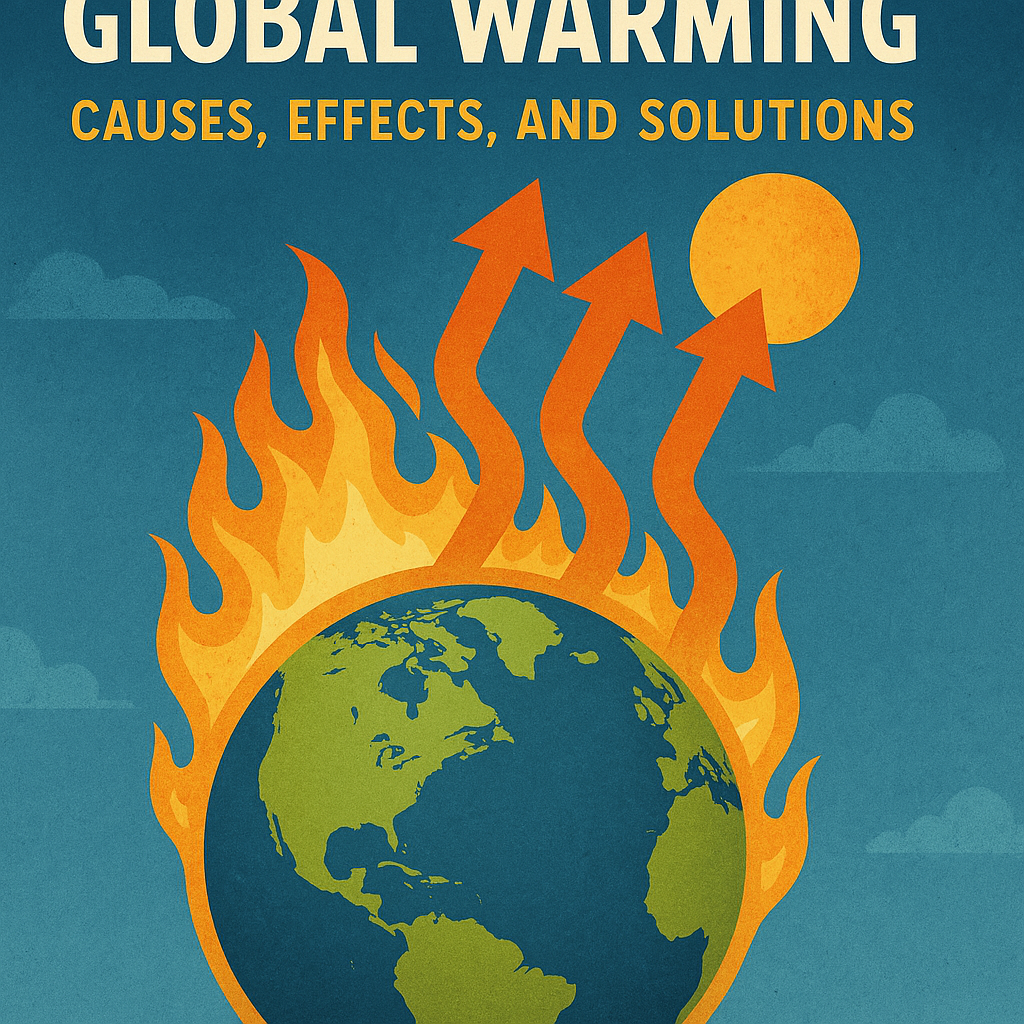Causes of Global Warming
1. Greenhouse Gas Emissions
The burning of fossil fuels (coal, oil, and natural gas) for energy, transportation, and industry is the largest source of CO₂ emissions. Deforestation also contributes by reducing the number of trees that absorb CO₂.
2. Industrial Activities
Factories and power plants release large amounts of GHGs. Additionally, industrial processes such as cement production emit significant CO₂.
3. Agricultural Practices
Livestock farming produces methane, a potent greenhouse gas, while the use of synthetic fertilizers releases nitrous oxide.
4. Deforestation
Trees absorb CO₂, but large-scale deforestation for agriculture, logging, and urban development reduces the planet's capacity to regulate greenhouse gases.
5. Waste Management
Landfills produce methane as organic waste decomposes, and improper waste disposal further exacerbates emissions.
Effects of Global Warming
1. Rising Temperatures
Global temperatures have increased by about 1.2°C since the pre-industrial era, leading to more frequent and intense heatwaves.
2. Melting Ice and Rising Sea Levels
Polar ice caps and glaciers are melting at an alarming rate, causing sea levels to rise. This threatens coastal communities with flooding and erosion.
3. Extreme Weather Events
Hurricanes, droughts, wildfires, and heavy rainfall are becoming more severe due to climate change.
4. Ocean Acidification
Excess CO₂ is absorbed by oceans, making them more acidic and harming marine life, particularly coral reefs and shellfish.
5. Biodiversity Loss
Many species struggle to adapt to rapid climate changes, leading to habitat destruction and extinction risks.
6. Health Risks
Higher temperatures increase the spread of diseases like malaria and dengue fever, while air pollution from burning fossil fuels worsens respiratory illnesses.
Solutions to Combat Global Warming
1. Transition to Renewable Energy
Shifting from fossil fuels to solar, wind, hydro, and geothermal energy can drastically reduce CO₂ emissions.
2. Energy Efficiency
Improving energy efficiency in buildings, transportation, and industries can lower energy consumption and emissions.
3. Reforestation and Afforestation
Planting more trees and protecting existing forests helps absorb CO₂ from the atmosphere.
4. Sustainable Agriculture
Practices like organic farming, reduced meat consumption, and better manure management can cut methane and nitrous oxide emissions.
5. Carbon Pricing and Policies
Governments can implement carbon taxes or cap-and-trade systems to incentivize businesses to reduce emissions.
6. Public Awareness and Education
Educating people about climate change and encouraging sustainable lifestyles can drive collective action.
Conclusion
Global warming is a critical issue that requires immediate and coordinated efforts from individuals, governments, and industries. By adopting renewable energy, improving sustainability, and enforcing strong climate policies, we can mitigate its worst effects and protect the planet for future generations. The time to act is now—every small step counts in the fight against climate change.



